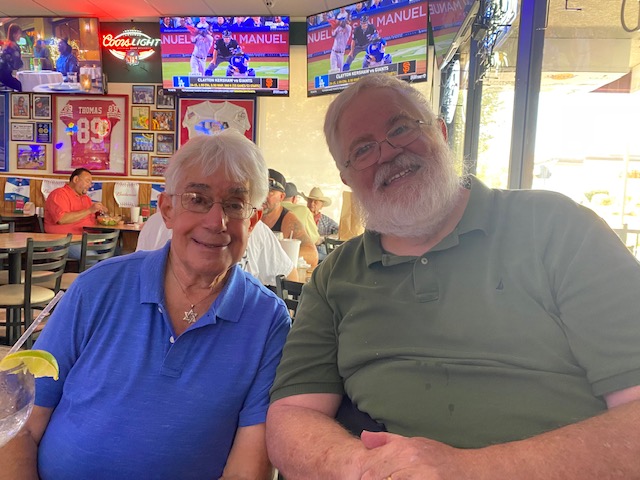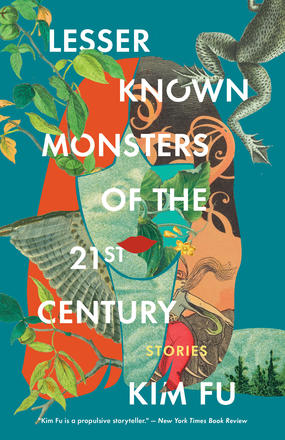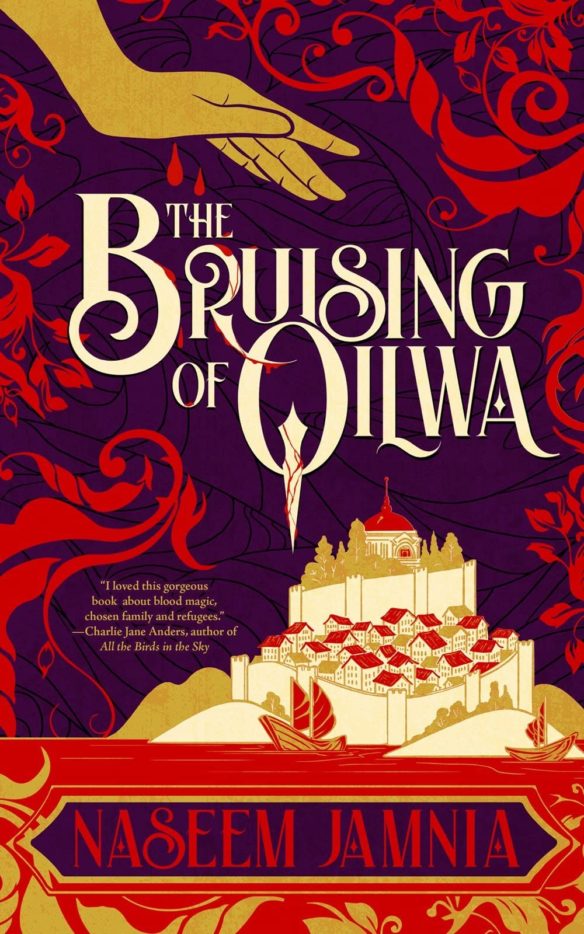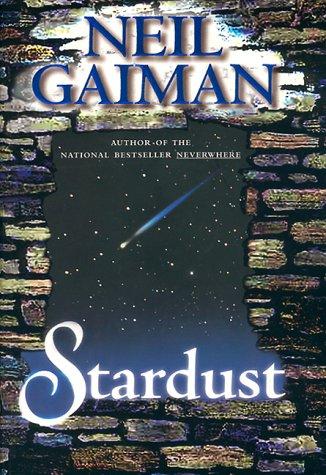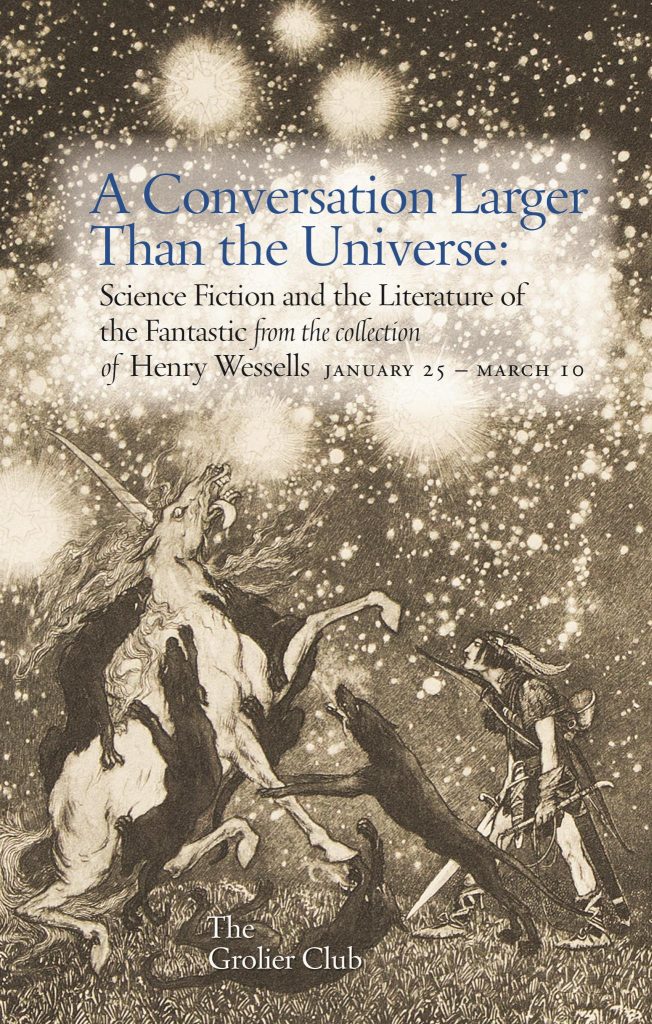(1) CONGRATULATIONS. The 2022 Washington State Book Award Winners in the Books For Adults Categories include two by authors often in the news here.
Biography/Memoir
- “Being Seen: One Deafblind Woman’s Fight to End Ableism” by Elsa Sjunneson, of Seattle (S&S/Simon Element)
Fiction
- “On Fragile Waves” by E. Lily Yu, of Western Washington (Erewhon)
(2) WHEN THE BIRD NESTS IN YOUR HEAD. Foz Meadows writes at length about the nature of Twitter interactions, taking as a text the criticisms and accusations made against her by Gretchen Felker-Martin and R.S. Benedict related to comments by Meadows about Isabel Fall and the author’s story “I Sexually Identify as an Attack Helicopter” for which Meadows subsequently apologized — “Twitter, Truth & Apologies”. At the end, Meadows sums up:
…And all too often, even when social media professes to want growth from those it accuses of wrongdoing, what it really wants is a new culprit to feel vindicated about shaming, because that’s easier than weighing up whether you think so-and-so deserves another chance, and whether all your mutuals will agree with you, and if saying so is worth the chance of being called an apologist in the event that they don’t. Being reactive is simpler, easier, but at some point, we have to accept that not all takes require responses, and that if they do, they don’t necessarily have to be ours. If there’s one positive thing I’ve taken out of all this, it’s a desire to be more judicious about how I speak online: to be less knee-jerk, to give less space to opinions that don’t merit discussion, and to try for kinder readings of the works and people around me…
(3) GET YOUR S&S FIX HERE. At Grimdark Magazine, John Mauro reviews the anthology A Book of Blades, edited by Matt John and L.D. Whitney, in which Cora Buhlert has a story.
…I’d also like to mention “The City of the Screaming Pillars,” Cora Buhlert’s quest story of four travelers seeking long-lost treasure in an abandoned city in the middle of the desert. “The City of the Screaming Pillars” starts off as a standard quest story but then dives into much darker Lovecraftian territory….
(4) NEAL ADAMS TRIBUTE. [Item by Daniel Dern.] I just saw the 3-page (comic) story they’re talking about in the new issue of Fables (either #153 or #154, IIRC); here’s links to some articles about it.
- “DC Releases Neal Adams Tribute Comic” at Comicbook.com.
DC Comics has published a comic paying tribute to legendary artist Neal Adams, following his passing earlier this year. The three-page story, which is called “The Endless Line”, began to be published in all DC titles beginning Tuesday, July 19th, is written by Tom King and drawn by Neal’s son, Josh Adams. The story, which you can check out in a tweet from King below, features snippets from a real-life interview that Adams did with The Comics Journal in 1982, with wisdom that he is bestowing while drawing a sketch for one of his characters, Deadman.
The final page of the story shows a line of other characters that Adams is known for waiting in line for sketches, including Batman, Green Arrow, Black Canary, and Green Lantern. Also included among the story are quotes from some of Adams’ contemporaries and fans, including Jim Lee, Frank Miller, and Roy Thomas, which highlight his prolific work as an artist and advocate for creators’ rights….
- Bleeding Cool’s post about the Tom King & Josh Adams Tribute recapped their obituary tribute:
In April, Bleeding Cool reported the sad news of the deal of comic book publisher, writer, artist and advocate, Neal Adams. From genre-defining runs on Batman, X-Men, Green Arrow and Green Lantern that would define the medium, and heavily influence the TV series and movies that would spin out of it, Neal Adams’ greatest legacy is one of creator rights, fighting for himself and fellow comic book creators against publishers, over rights, royalties, return of artwork and basic human decency. So much so that he even started his own publisher, Continuity Comics, and later his own comic book shop. He also fought creators to value their own contribution, demanding they charge for sketches and then signatures at comic book conventions, as a measure of their worth.
And here’s a tweet to the full 3-page story!
(5) TALES FROM THE ROOF. In the Washington Post, Mary Quattlebaum interviews comedian George Lopez, who has co-written middle-grade horror novel Chupacarter with Ryan Canejo. “George Lopez, Ryan Calejo blend Latin folklore and laughs in new novel”.
… Like Jorge in the book, Lopez did some of his best thinking as a kid on the roof of his grandparents’ house in Southern California. “I’d sit there and look at the moon and wonder ‘Who am I going to be?’ ” he said.
His grandmother and step-grandfather, who raised him, are the models for Jorge’s loud, tough abuela and gentle abuelo.
Though his abuela didn’t throw empanadas at him, as does Jorge’s grandmother, she “did throw other things,” said Lopez with a laugh.
Calejo’s abuelas told him stories of frightening chupacabras and other legendary creatures to entertain and keep him out of mischief, Calejo said by phone from his home in Miami, Florida.
These tales inspired the first story he remembers writing in elementary school. It was about a protective doglike spirit known as el cadejo….
(6) ELLISON COMMEMORATION. “Troublemaker, Malcontent, Desperado: A Celebration of the Life and Legacy of Harlan Ellison” will be hosted by the Ohio Center for the Book at Cleveland Public Library on September 17. [Warning: The downloadable 2007 booklet is a 238MB PDF file.]
The Ohio Center for the Book, in collaboration with Cleveland State University and Celebrating Cleveland’s Past Masters*, are honoring the life and legacy of Harlan Ellison: speculative fiction author, screenwriter, social critic, and self-described “troublemaker, malcontent, desperado” on Saturday, Sept. 17, 1:00 pm at Cleveland Public Library’s Louis Stokes Wing, 2nd floor, 525 Superior Avenue in downtown Cleveland.
The event commemorates the 15th anniversary of Ellison’s last public appearance in his hometown of Cleveland when he participated in the 2007 Midwest premiere of the biographical documentary Dreams with Sharp Teeth in the auditorium of Cleveland Public Library.
Click here to download a high-resolution PDF of the 2007 program booklet, A Tribute to Harlan Ellison, with appreciations, congratulations, and “short stories” from Daniel Pinkwater, Stuart Kaminsky, Marv Wolfman, Michael Moorcock, Leonard Maltin, Eric Shanower, Leo and Diane Dillon, Steven Barnes and Tananarive Due, Richard Matheson, David Twohy, and many, many others!
(7) BEST OF THE BEST. The Unofficial Hugo Book Club Blog says next year’s Hugo ballot is already filled to overflowing with deserving media. Thread starts here.
(8) A DAUGHTER’S MEMOIR. “Emma Straub Remembers Her Father, Peter Straub” at Vulture. Andrew Porter sent the link with a note about his missed opportunity: “I confirmed that he was living in the Watermark, the assisted living facility in the former Towers Hotel, literally half a block from where I live… Wish I’d known; I’ve have visited him there.”
When I gave my father the pile of pages that would become my novel This Time Tomorrow, he quickly thumbed to the back and asked, “What page do I die on?” This was a joke and also not a joke. In the book, he (“he” being Leonard Stern, the fictional father in my novel) dies on page 301. In real life, off the page, my father, Peter Straub, died on September 4, 2022. In the book, Leonard dies in his bedroom at home with his daughter, her stepmother, and his nurse. In real life, my father died in the windowless ICU hospital room he’d been stuck in for a month, most of that time doing fairly well, recovering from a fractured hip and sitting up, reading books and watching MSNBC, just as he would have at home. My mother and brother and I were by his side, and I held his hand. It started very slowly — what page do we begin to die on, any of us — and, mercifully, ended fast….
(9) MEDIA BIRTHDAY.
1974 – [By Cat Eldridge.] Forty-eight years ago this evening Kolchak: The Night Stalker first aired on ABC. It was preceded by The Night Stalker and The Night Strangler films, both written by Richard Matheson.
It was based off a novel by Jeff Rice who Mike has some thoughts about here.
It was remade seventeen years ago as The Night Stalker with Stuart Townsend as Carl Kolchak. It lasted ten episodes. It was set in Los Angeles. Need I say more?
Let’s talk about Darren McGavin for a moment. He was perfect for this role. Though only fifty-two when the series was shot, he looked a decade older and quite beat up. That suit he wore could have been acquired second hand. Or fourth hand. And that hat — I wonder how many they had in props that were exactly identical.
The actor himself had certainly had some interesting times with four divorces by then, and this was not his first time portraying a world-weary investigator. He was the title character in the short-lived Mickey Spillane’s Mike Hammer series in the Fifties. It lasted a year.
Now Kolchak: The Night Stalker did not break the pattern of having a beautiful woman around as it had Carol Ann Susi as the recurring character of semi-competent but likable intern Monique Marmelstein in a recurring role.
And I really liked the characters of his boss, Tony Vincenzo as played by Simon Oakland, who was quite bellicose and had no clue of what Kolchak was doing. Good thing that was, too.
Ahhh the monsters. Some were SF, sort of — a murderous android, an invisible ET, a prehistoric ape-man grown from thawed cell samples, and a lizard-creature protecting its eggs. Then there was the fantastic ones — a Jack the Ripper, a headless motorcycle rider, vampires, werewolves, witches and zombies to name but a few he tangled with.
It has become a cult favorite which currently carries a not surprising ninety-four percent rating among audience reviewers at Rotten Tomatoes but it was a ratings failure complicated by Darren McGavin being unwilling to do more episodes and only lasted one season before being cancelled.
Chris Carter who credits the series as the primary inspiration for The X-Files wanted McGavin to appear as Kolchak in one or more episodes of that series, but McGavin was unwilling to reprise the character for his show. He did appear on the series as retired FBI agent very obviously attired in Kolchak’s trademark seersucker jacket, black knit tie, and straw hat.
C.J. Henderson, who won a World Fantasy Award for his Sarob Press, wrote three Night Stalker novels — Kolchak and the Lost World, Kolchak: Necronomicon and What Every Coin Has. There have been other novels and shorts published. Three unfilmed scripts for the TV series have survived, “Eve of Terror”, written by Stephen Lord, “The Get of Belial”, written by Donn Mullally, and “The Executioners”, written by Max Hodge.
Let’s see if it streaming anywhere… It is streaming on NBC of course.
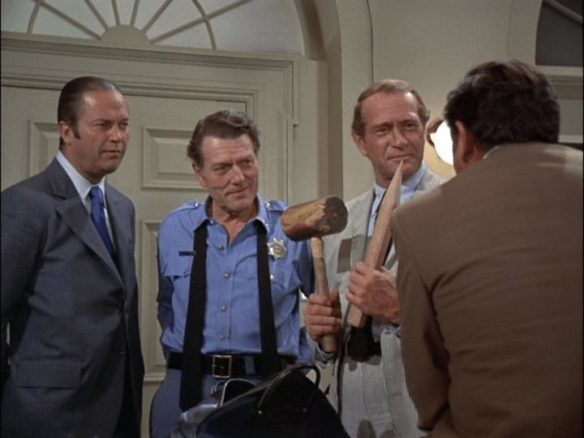
(10) TODAY’S BIRTHDAYS.
[Compiled by Cat Eldridge.]
- Born September 13, 1916 — Roald Dahl. Did you know he wrote the screenplay for You Only Live Twice? Or that he hosted and wrote for a sf and horror television anthology series called Way Out which aired before The Twilight Zone for a season? He also hosted Roald Dahl’s Tales of the Unexpected broadcast in the UK. My favorite Dahl works are The BFG and The Witches. What’s yours? (Died 1990.)
- Born September 13, 1920 — John Crawford. He appeared in The Twilight Zone’s “A Hundred Yards Over the Rim” as Joe. He was also Harrison in the early Fifties pulp The Invisible Monster. Interestingly he was Roth in Zombies of the Stratosphere which was supposed to be a Commando Cody serial but got changed for reasons unknown. And late in his career, he was Polydeukes in Jason and the Argonauts. (Died 2010.)
- Born September 13, 1931 — Barbara Bain, 91. She’s most remembered for co-starring in the original Mission: Impossible television series in the 1960s as Cinnamon Carter, and Space: 1999 as Doctor Helena Russell. Her first genre role was as Alma in the “KAOS in CONTROL” episode of Get Smart! She was active as of last year as showed in the Space Command series as Auut Simone in the “Ripple Effect” episode.
- Born September 13, 1933 — Warren Murphy. Ok, I’ll admit that I’m most likely stretching the definition of genre just a bit by including him as he’s best known for writing along with Richard Sapir the pulp Destroyer series that ran to some seventy novels and was (making it possibly genre) the basis of Remo Williams: The Adventure Begins. He did a number of other series that were more definitely genre. (Died 2015.)
- Born September 13, 1937 — Don Bluth, 85. Animator of quite some note. In his career, he’s been involved in some manner with Winnie the Pooh and Tigger Too, the Fantastic Voyage series, the Archie series (seriously) Will the Real Jerry Lewis Please Sit Down series (again seriously) The Secret of NIMH, An American Tail, The Land Before Time, Anastasia and Titan A.E.
- Born September 13, 1944 — Jacqueline Bisset, 78. I never pass up a Bond performance and so she’s got on the Birthday Honors by being Giovanna Goodthighs in Casino Royale even though that might have been one of the dumbest character names ever. As near as I can tell, until she shows up in as Charlotte Burton in the “Love the Lie” episode of the Counterpart series that’s her entire encounter with genre acting. Genre adjacent, she appeared in the Albert Finney fronted Murder on the Orient Express as Countess Helena Andrenyi.
- Born September 13, 1947 — Mike Grell, 75. He’s best known for his work on books such as Green Lantern/Green Arrow, The Warlord, and Jon Sable Freelance. The Warlord featuring Travis Morgan is a hollow Earth adventure series set in Skartaris which is a homage to Jules Verne as Grell points out “the name comes from the mountain peak Scartaris that points the way to the passage to the earth’s core in Journey to the Center of the Earth. The animated Justice League Unlimited “Chaos at the Earth’s Core“ episode made use of this story.
- Born September 13, 1974 — Fiona Avery, 48. Comic book and genre series scriptwriter. While being a reference editor on the final season of Babylon 5, she wrote “The Well of Forever” and “Patterns of the Soul” as well as two that were not produced, “Value Judgements” and “Tried and True”. After work on the Crusade series ended, she turned to comic book writing, working for Marvel and Top Cow with J. Michael Straczynski’s Rising Stars series being another place where her scripts were used. She created the Marvel character Anya Sofia Corazon later named Spider-girl. She did work on Tomb Raider, Spider-Man, X-Men and Witchblade as well.
(11) MIRACLEMAN. Neil Gaiman and Mark Buckingham’s unfinished storyline “The Silver Age” begins October 19.
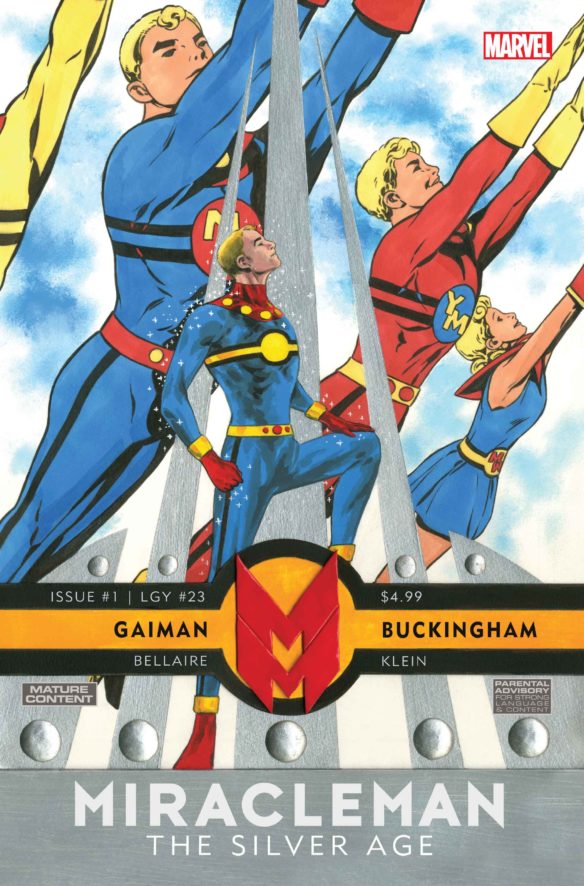
In the late 80s, Neil Gaiman and Mark Buckingham took over the saga of Miracleman to critical acclaim. The pair of comic visionaries expanded the Miracleman mythos with new characters and introduced the story of Young Miracleman. Their series was cut short mid-storyline almost 30 years ago, but now their Miracleman: The Silver Age saga will finally be completed! MIRACLEMAN BY GAIMAN & BUCKINGHAM: THE SILVER AGE #1 and MIRACLEMAN BY GAIMAN & BUCKINGHAM: THE SILVER AGE #2 will present the early chapters of the story that made it to stands but with stunning new remastered artwork by Buckingham and containing bonus content! And then, starting in December’s MIRACLEMAN: THE SILVER AGE #3, all-new material by Neil Gaiman and Mark Buckingham will at long last, continue this legendary comic story!
(12) SEARCHING FOR INTELLIGENT LIFE. Carl Sagan tells the BBC in 1967 how to send a message to outer space that extraterrestrials could understand. “Where Is Everybody?”
(13) MORE DISNEY SEQUEL MANIA. Disney revives the National Treasure franchise but without Nic Cage. “National Treasure: Edge Of History Official Trailer”.
Jess Morales, a 20-year-old Dreamer, sets off on an exploration to discover the mystery of her family history, and, with the help of her friends, seeks to recover historical lost treasure.
(14) VIDEO OF THE DAY. [Item by Martin Morse Wooster.] In “Thor: Love and Thunder,” the Screen Junkies say this film has “the joke rate of Family Guy” (including playing Jane Foster’s fatal pancreatic cancer for laughs) with “the look of that time you shroomed at Dave and Busters.” Chris Hemsworth, who has played Thor ten times in eight years, struggles to come up with something new, and few will be excited by the “100 screaming goat jokes.”
[Thanks to Chris Barkley, Michael Toman, Cat Eldridge, Cora Buhlert, N., Mike Kennedy, Martin Morse Wooster, JJ, John King Tarpinian, and Andrew Porter for some of these stories. Title credit belongs to File 770 contributing editor of the day Andrew (not Werdna).]

